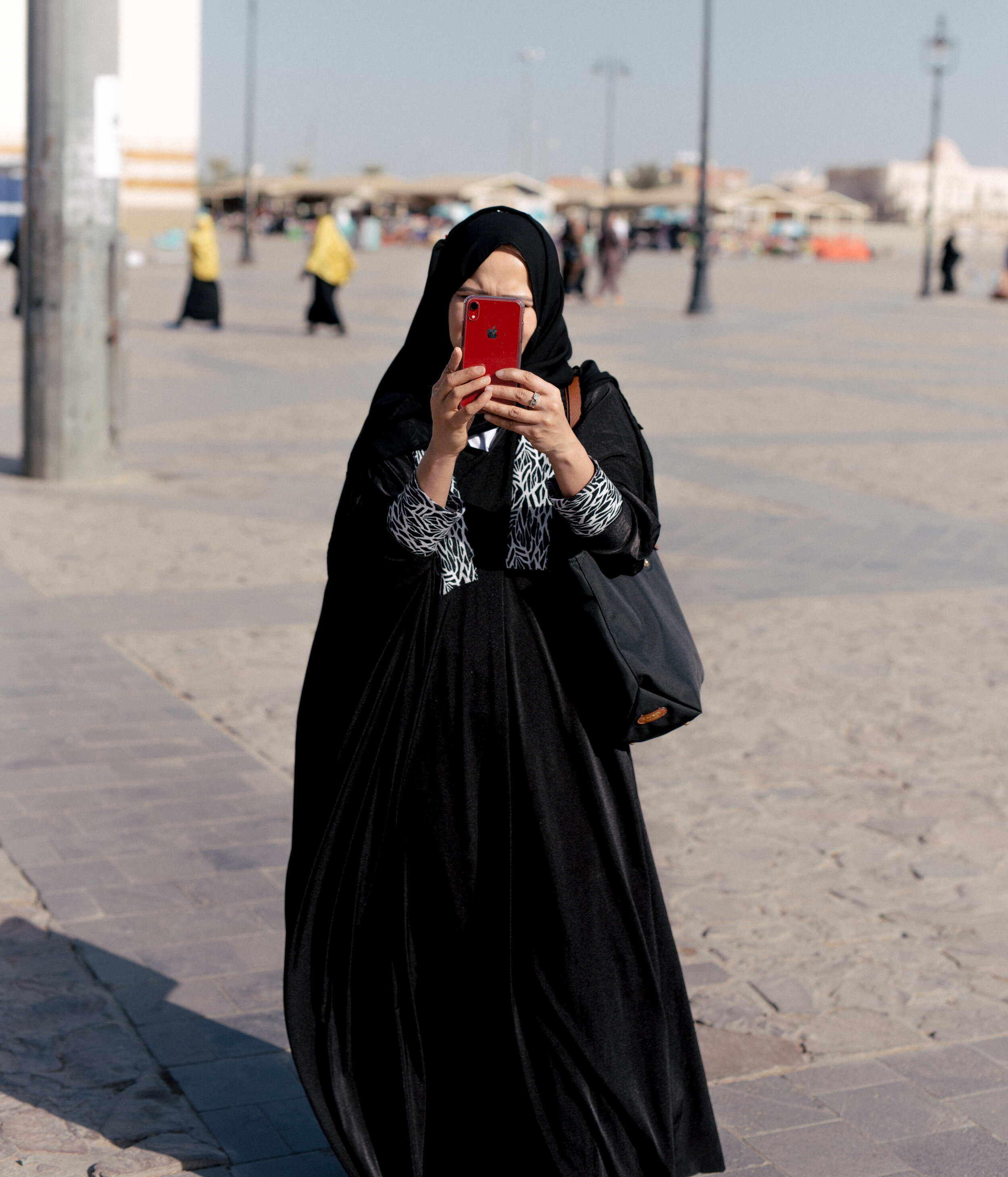"Hajji": A Photo Series by Raafae Ghory
Untitled (mother) 2019 © Raafae Ghory
Mecca, also spelled Makkah, is a city in the Hejaz region of Saudi Arabia. Like most large cities around the world, it has been touched by global capitalism. Raafae Ghory, a photographer from New Jersey, documented his Umrah pilgrimage to Mecca. Umrah is similar to Hajj, the more commonly known Islamic pilgrimage that takes place during Dhul-Hijjah, the last month on the Islamic calendar. However, Umrah can be completed during any time of the year.
As an American-Pakistani Muslim traveling through Saudi Arabia, Ghory found himself particularly interested in the interaction of capitalism and globalization within the holy Islamic city. Ghory’s photography situates the viewer as an outsider looking in, while simultaneously providing an insider’s view for people of different faiths who do not partake in Umrah. Ghory explains the tension of being both an insider and an outsider throughout the trip, saying “Growing up as a zoomer American Muslim there have been many times growing up I found it difficult to accept religion at all… this trip opened up my eyes to how embracing Islam and its ideals are. I felt both like an outsider and an insider at the same time, which is why photographing helped a lot.”
Untitled 2019 © Raafae Ghory
During the 20th and 21st centuries, Mecca expanded many mosques, revamped housing and sanitation, and improved public transportation, to accommodate the growing number of Muslims from around the world that participate in Islamic pilgrimages. Hajj and Umrah are the 2nd highest form of revenue for the Saudi Arabian economy behind oil, racking in around 20% of the nations non-oil GDP. This is not to say that pilgrimages are turning into business ventures; however, it is inevitable that an event attracting the global Muslim population, upwards of 1.6 billion people, would become intertwined with the nation’s capital. With millions of people traveling to the city each year comes an influx of consumers spending money on housing, food, gifts, and transportation. Ghory began to document the many faces of Mecca, both ancient and modern, through his photography. His perspective allowed him to take photographs that are both informed, and curious, as a newcomer to Umrah.
Heading to Prayers (IV) ,2019 © Raafae Ghory
“I used the camera as a way of navigating and understanding my positionality physically, spiritually, and socially.”
Addicted, 2019 © Raafae Ghory
Throughout the trip, Ghory noted how prevalent marketing and branding was. Most of the monopolistic brands he saw in New York also had a presence in Mecca. He had to remind himself to notice the advertisements plastered around the city, otherwise they would blend in. Ghory’s work showcases the dichotomies of capitalism, market consumerism, and technology amongst ancient places of worship, sacred traditions, and prayer.
He shows people taking selfies, video chatting with friends, and kids reaching for their parent’s iPhones. Some photos place brands like Christian Dior, and other recognizable names, front and center on clothes and accessories. Ghory has a remarkable eye for composition, framing iPhones, designer bags, and billboards with outlines of people and old structures. They feel nostalgic because of their personal, up-close nature, even though they showcase a very recent time. These images illustrate of the ways technology can help people communicate and unify during times of religious connection, and the ways it can distract them.
Dior Bag, 2019 © Raafae Ghory
Ghory explains how Umrah is a time for personal introspection; in a new era of live-streaming and capturing individual experiences through platforms like Instagram, it seems as though the beauty of the dedicated worship during Umrah and Hajj can reach a larger platform of viewers. It would be easy to suggest that technology distracts people from the world around them, but it can also do an insurmountable amount of good. Since Hajj and Umrah are exclusive to members of the Islamic faith, perhaps the ability to share religious experiences with Islam via social media platforms can become a useful tool for expanding the often narrow view that many Americans have of the Muslim faith. Ghory’s work highlights the sometimes stark, sometimes delicate contrast between religious tradition and contemporary society with a nonjudgmental eye; opinions on the subject matter are up to the viewer to determine.
Heading to Prayers (III), 2019 © Raafae Ghory
Ghory’s work has been displayed at the NYU Tisch School of the Arts photo gallery for his senior thesis, and is currently working on a photography book for the Hajji series. You can see more of his work here.













